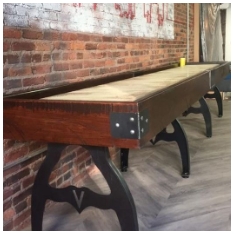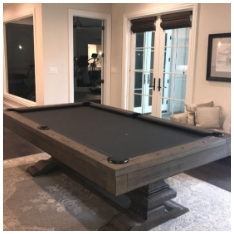The pool table, a centerpiece of social gatherings and competitive play, has undergone significant transformations over the centuries. From the grandeur of traditional designs to the sleek aesthetics of contemporary models, the evolution of pool tables mirrors changes in culture, technology, and craftsmanship.
The Origins of Pool Tables
The Birth of Billiards
Billiards, the precursor to modern pool, can trace its origins back to the 15th century. Initially played on lawns, the game gradually moved indoors, requiring a specially designed table. Early pool tables were luxurious pieces of furniture, often made from fine woods and decorated with intricate carvings.

Early Designs and Materials
The earliest pool tables featured wooden beds covered with cloth, and the balls were made of wood or clay. The rails were simple barriers to keep the balls on the table. The game’s increasing popularity among European nobility led to innovations in table design and materials.
The 18th and 19th Centuries: A Period of Innovation
Introduction of Slate Beds
One of the most significant advancements in pool table design was the introduction of slate beds in the 18th century. Slate provided a more stable and level surface, greatly improving the playing experience. This period also saw the development of more sophisticated rail systems and the use of leather for pocket linings.
The Impact of Industrialization
The Industrial Revolution brought about mass production techniques, making pool tables more accessible to the general public. Iron and steel began to be used in the construction of tables, enhancing their durability and precision.
The Rise of Standardized Tables
By the mid-19th century, the standardization of table sizes and designs had begun. This was crucial for the organization of competitive play, ensuring consistency in the playing conditions across different locations.
The 20th Century: Modernization and Commercialization
The Golden Age of Pool
The early 20th century is often referred to as the golden age of pool. The game’s popularity soared, particularly in the United States, where it became a staple of bars and social clubs. This era saw the rise of iconic pool table manufacturers who introduced innovative designs and marketing strategies.
Influence of Popular Culture
Movies, television, and celebrities played a significant role in popularizing pool. Iconic scenes in films and TV shows featuring pool games helped cement the table’s status as a cultural icon.
The Design Evolution: Transition to Modern Pool Tables
Shifts in Aesthetic Preferences
As the 20th century progressed, there was a noticeable shift in aesthetic preferences. Modern pool tables began to reflect contemporary design trends, incorporating clean lines, minimalist forms, and new materials.
Technological Advancements
Advancements in technology have played a crucial role in the evolution of modern pool tables. The use of computer-aided design (CAD) and precision engineering has resulted in tables that are not only aesthetically pleasing but also offer superior playability.
Conclusion
The journey of the pool table from its humble beginnings to the sleek modern designs of today is a testament to human ingenuity and the enduring appeal of the game. In the next part, we will delve deeper into the specific features of modern pool tables and how they compare to their traditional counterparts.





